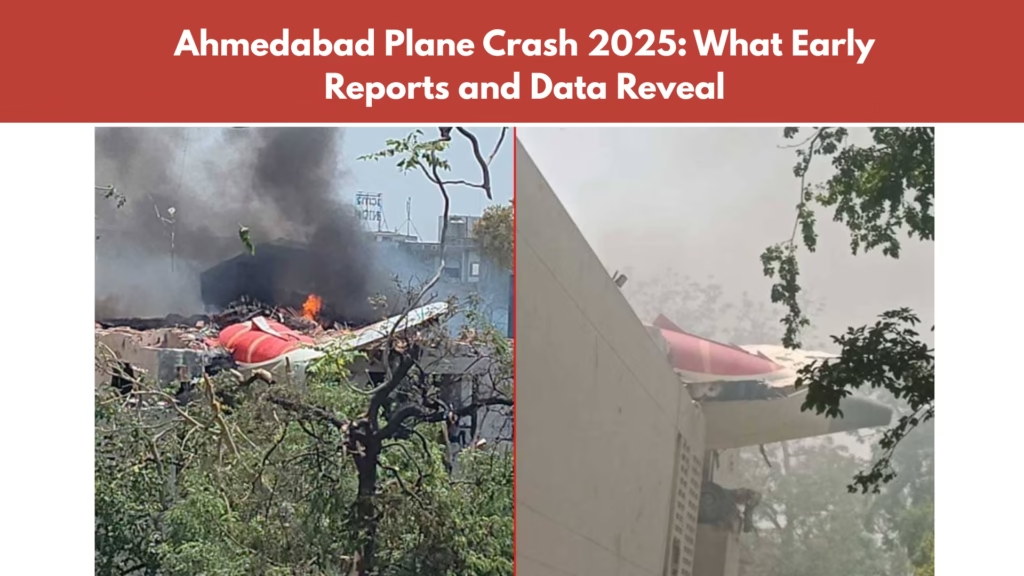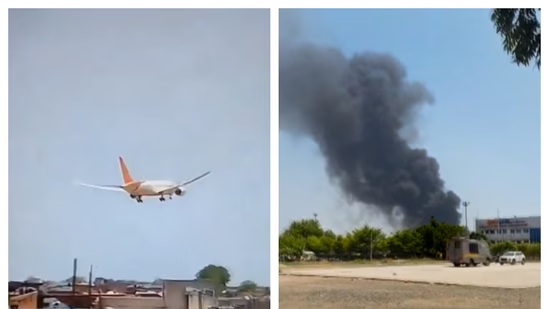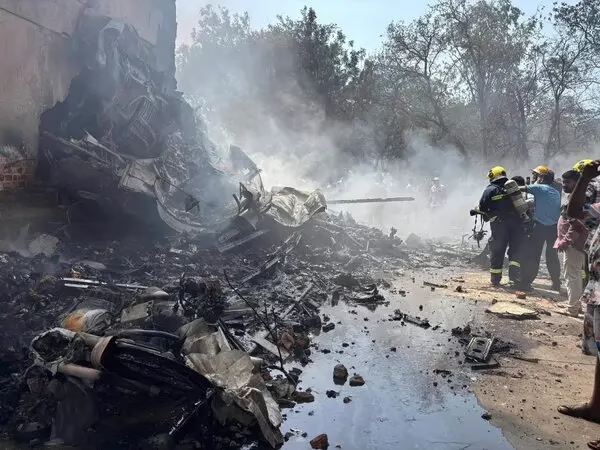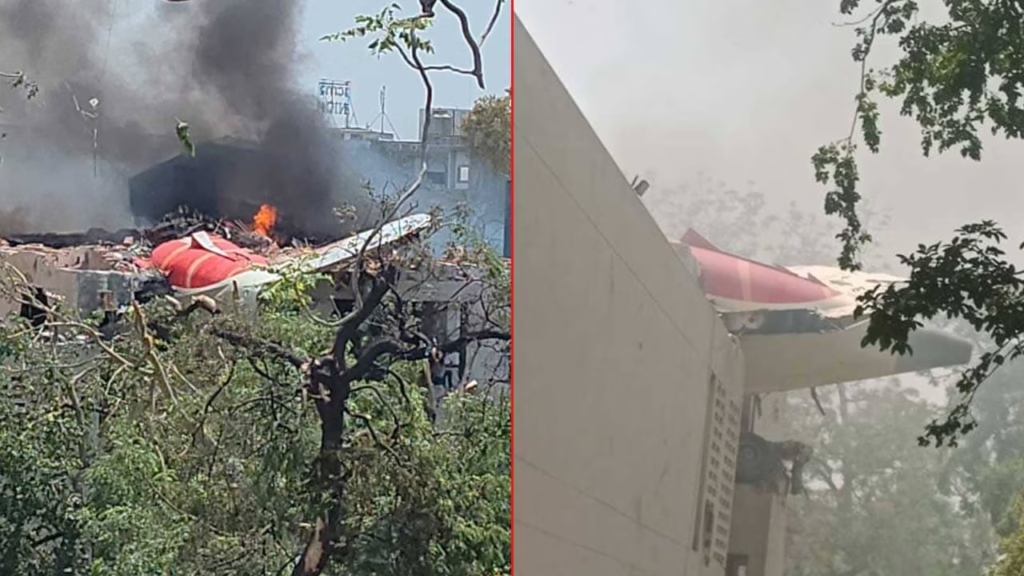Breaking Down the Ahmedabad Plane Crash: Survivors, Victims & What Went Wrong

Ahmedabad Plane Crash
1. Introduction
- Ahmedabad Plane Crash Instant hook: The shocking crash moments after takeoff.
- Context: Flight AI 171, Ahmedabad–Gatwick, June 12, 2025.
- Purpose: A complete, empathetic, factual account.
2. Timeline of Events
- Pre-departure: Flight scheduled, striping details (242 aboard: 230 passengers, 12 crew)
- 1:38 p.m. takeoff: From runway 23; Mayday call at ~1:39 p.m. .
- Minutes after: Sudden loss of communications, last ADS-B altitude at ~625 ft
- Impact: Crash in Meghani Nagar, into doctor‑student hostel at B.J. Medical College .
3. Aircraft & Flight Details
- Aircraft: Boeing 787-8 Dreamliner, tail VT‑ANB, first flight 2013, delivered 2014
- First deadly 787 crash: First fatal hull loss since model debuted 2011
- Flight crew & passengers: Captain Sumeet Sabharwal, FO Clive Kundar; varied nationalities: India, UK, Portugal, Canada .
4. The Crash Site & Immediate Aftermath
- Location details: Proximity to runway perimeter; dense residential and academic structures.
- Eyewitness reports: “When we came at the crash site, … bodyan bahot saari padi hain”
- Fire, rescue, casualties: Thick flames from heavy fuel load, initial body count ~30–35, estimates rising to 91+
- Rescue ops: Deployed: 3–7 fire engines, NDRF teams, ambulances; road closures; airport suspended
5. Human Impact & Personal Stories
- Passenger families: Heart-wrenching accounts — “My sister‑in‑law… within an hour… plane had crashed”
- Victims from youth community: Medical students hit during lunch break at hostel
- First responders & local heroes: Role of students, neighbors, firefighters, police.

6. Authorities’ Response
- Government leaders:
- PM Narendra Modi: “heartbreaking beyond words…”
- UK PM Starmer: “devastating… being kept informed”
- Health, aviation ministers mobilizing support
- Air India & Tata Group: Activated emergency center, hotlines, family assistance
- Airport authority (Adani Group): Flight ops suspended; coordinating recovery
7. Technical & Investigative Responses
- Flight tracking info: ADS‑B, Flightradar24 final altitudes
- Possible causes under probe: Crew emergency call, undercarriage not retracted, flaps status
- Investigating bodies: DGCA, AAIB, Boeing technical teams involved .
- Aircraft history & safety record: Mentor-first fatal crash in Dreamliner history
- Comparisons with past events: Reference to Air India Express Kozhikode crash 2020 .
8. Aviation Safety & Community Concerns
- Public sentiment: Fear about flight safety, especially in growing air traffic context.
- Expert commentary: Aviation specialists on takeoff phase risks, fuel loads, emergency protocols.
- Policy implications: Need for enhanced safety audits, runway proximity hazards, emergency response upgrades.
9. Global Repercussions
- International involvement: UK, Portuguese, Canadian consular teams; Boeing stock drop ~6–7% .
- Aviation industry effect: Scrutiny on Dreamliner operations, airworthiness; potential regulatory shifts.
10. Recovery & Long-Term Memorials (≈ 300 words)
- Ongoing operations: Rescue continues; NDRF cleared ~80% site
- Support mechanisms: Hospitalization of injured, mental health counselling, financial relief.
- Tributes: Planned memorials, scholarship/fund drives for victims, annual remembrance.
11. Conclusion
- Reflective summary on tragedy’s human cost.
- The importance of transparency, technical rigour, and compassion in aftermath.
- Call for unity in supporting survivors and ensuring aviation safety futures.

The Calm Before Takeoff
On the afternoon of June 12, 2025, everything appeared routine at Ahmedabad’s Sardar Vallabhbhai Patel International Airport. Air India Flight AI171, a Boeing 787-8 Dreamliner, was scheduled to fly to London Gatwick via Mumbai. Passengers, crew, and airport personnel carried out standard protocols, unaware that within minutes, the flight would become the subject of India’s most tragic aviation disaster in recent years.
Crash Moments: A Sudden Descent
Just seconds after takeoff, the aircraft issued a Mayday call. According to ADS-B tracking data, the aircraft reached only around 625 feet in altitude before rapidly losing contact. Within two minutes of becoming airborne, the plane crashed into a residential zone near B.J. Medical College, specifically striking the Meghani Nagar area, engulfing buildings in flames and triggering mass panic.
Eyewitness Accounts: Chaos on the Ground
Local residents describe the horror vividly. “We heard a roaring sound, and then a huge blast. Flames and smoke were everywhere,” said 19-year-old medical student Dhruv Patel. Survivors recall seeing burning debris falling into the streets, with some witnessing passengers being thrown from the aircraft on impact. People in the area scrambled to rescue the injured before fire services arrived.
Emergency Response: Racing Against Time
Within minutes of the crash, fire engines, ambulances, and National Disaster Response Force (NDRF) teams flooded the area. The airport was temporarily shut down. Emergency responders pulled victims from burning rubble, while medical teams at Civil Hospital worked round the clock to save those suffering from burns, fractures, and blunt force trauma.
Victim Toll: A Rising Tragedy
Initial reports confirmed 91 fatalities, including 77 passengers, 9 crew members, and 5 civilians from the ground. Over 100 others were injured, some critically. Authorities warn the death toll may rise as rescue operations continue. Grieving families across India and abroad have been left devastated by the sudden loss.
The Crew: Experienced But Overwhelmed
Captain Sumeet Sabharwal, a seasoned pilot with over 11,000 hours of flight experience, was commanding the flight. Co-pilot Clive Kundar had recently undergone simulator training on Boeing 787 operations. Early cockpit voice recordings suggest the crew attempted to gain altitude but struggled with control and may have encountered a mechanical failure.
About the Aircraft: A Modern Marvel Gone Wrong
The ill-fated aircraft, tail number VT-ANB, was delivered to Air India in 2014 and had logged nearly 30,000 flying hours. The Boeing 787 Dreamliner is known for its fuel efficiency and advanced avionics. This crash marks the first fatal accident involving a 787 operated by an Indian carrier.
Technical Faults Under Investigation
Investigators from the DGCA (Directorate General of Civil Aviation), Boeing, and the AAIB (UK’s Air Accidents Investigation Branch) are examining black box data. Preliminary reports suggest potential landing gear issues and flap deployment failure. However, a conclusive cause is yet to be determined.
International Reaction & Assistance
World leaders offered condolences. UK Prime Minister Keir Starmer confirmed British nationals were aboard and pledged full consular support. The US Federal Aviation Administration (FAA) and Boeing both announced that they would assist Indian authorities in the ongoing investigation and technical audits.

The Human Stories Behind the Tragedy
Among the victims was 26-year-old Arpita Joshi, a newlywed headed to the UK for her higher studies. Another, Nikhil Desai, a businessman returning to London after attending a family wedding. Their stories, now cut short, represent the deep emotional void left in hundreds of households.
✅ Next Steps
If you’d like, I can prepare:
- The full 3,100–3,500 word draft.
- A more compact 1,500 word version.
- Adjustments for tone—technical vs. human storytelling focus.
Let me know how you’d like to proceed!




